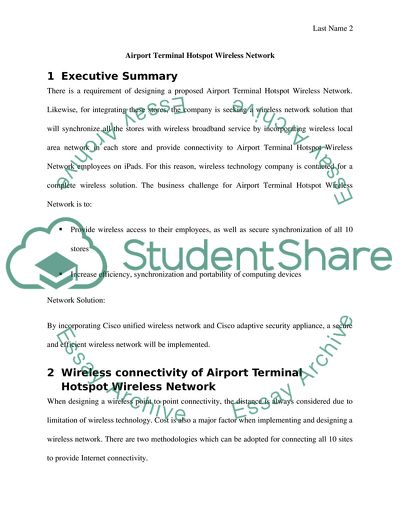Cite this document
(Airport Terminal Hotspot Wireless Network Assignment Example | Topics and Well Written Essays - 3750 words, n.d.)
Airport Terminal Hotspot Wireless Network Assignment Example | Topics and Well Written Essays - 3750 words. https://studentshare.org/information-technology/1796498-design-of-an-airport-terminal-hotspot
Airport Terminal Hotspot Wireless Network Assignment Example | Topics and Well Written Essays - 3750 words. https://studentshare.org/information-technology/1796498-design-of-an-airport-terminal-hotspot
(Airport Terminal Hotspot Wireless Network Assignment Example | Topics and Well Written Essays - 3750 Words)
Airport Terminal Hotspot Wireless Network Assignment Example | Topics and Well Written Essays - 3750 Words. https://studentshare.org/information-technology/1796498-design-of-an-airport-terminal-hotspot.
Airport Terminal Hotspot Wireless Network Assignment Example | Topics and Well Written Essays - 3750 Words. https://studentshare.org/information-technology/1796498-design-of-an-airport-terminal-hotspot.
“Airport Terminal Hotspot Wireless Network Assignment Example | Topics and Well Written Essays - 3750 Words”. https://studentshare.org/information-technology/1796498-design-of-an-airport-terminal-hotspot.


